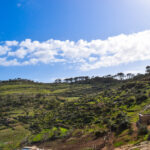Welcome to Trip4up, your ultimate companion for extraordinary travel experiences. At Trip4up, we specialize in curating and organizing unforgettable trips to some of the most breathtaking mountain, desert, and beach destinations. Our platform offers a seamless booking experience, covering every aspect of your journey, from accommodation and food to expertly guided tours. Whether you’re seeking the tranquility of a beach, the adventure of a desert, or the majesty of a mountain range, Trip4up ensures that your travel dreams become a reality with ease and comfort.
Importance of Specialized Trips to Mountains, Deserts, and Beaches
Specialized trips to mountains, deserts, and beaches offer unparalleled opportunities for adventure and relaxation, connecting travelers with nature’s diverse wonders. Mountains provide a serene escape with stunning vistas and invigorating hikes, fostering both physical and mental well-being. Desert journeys reveal a world of stark beauty and unique ecosystems, perfect for those seeking solitude and reflection. Beach vacations, on the other hand, offer sun, sand, and sea—ideal for relaxation, water sports, and family fun. By focusing on these distinct environments, Trip4up caters to a wide range of interests and desires, ensuring every traveler finds their perfect getaway.
Why Choose Trip4up?
Choosing Trip4up means entrusting your travel plans to a team of experts with a deep passion for creating exceptional mountain, desert, and beach experiences. Our expertise in organizing trips to these diverse environments ensures that every detail of your journey is meticulously planned and executed.
Trip4up offers comprehensive services that cover all your travel needs. From comfortable and unique accommodations to delicious and regionally inspired meals, we ensure your comfort and satisfaction. Our knowledgeable tour guides provide insightful and engaging tours, enhancing your travel experience with their expertise and local knowledge.
What truly sets Trip4up apart is our commitment to crafting unique experiences and personalized itineraries. We understand that every traveler is different, and we take the time to tailor each trip to your specific interests and preferences. With Trip4up, you’re not just booking a trip; you’re embarking on a personalized adventure designed to create lasting memories.
How to Dress for Wilderness Adventures
Dressing appropriately for wilderness adventures is crucial for comfort, safety, and enjoyment. The right clothing can protect you from the elements, regulate your body temperature, and enhance your overall experience.
Importance of Appropriate Clothing
When embarking on wilderness adventures, the clothing you choose plays a significant role in your overall experience. Appropriate clothing provides protection from environmental hazards such as sun exposure, wind, rain, and temperature extremes. It also ensures comfort during physical activities, preventing issues like chafing, blisters, and overheating or hypothermia.
By choosing the right clothing and layering appropriately, you can ensure a safe, comfortable, and enjoyable wilderness adventure.
Packing Your Luggage
When preparing for wilderness adventures, packing the right essentials is crucial for a safe and enjoyable experience. Here are the key items you’ll need for mountain, desert, and beach trips, along with tips for packing light and smart.
Essentials for Mountain Trips
Comfortable Clothing
Sturdy, waterproof hiking boots
Warm hat, gloves, and scarf
Sunglasses and sunscreen
Backpack with a rain cover
Hiking poles
Map and compass or GPS
Headlamp with extra batteries
First aid kit
Multi-tool or knife
Hydration system or water bottles
Other Essentials:
High-energy snacks and packed meals
Emergency shelter (bivvy bag or space blanket)
Essentials for Desert Trips
Lightweight, breathable long-sleeve shirts and pants
Wide-brimmed hat for sun protection
Sunglasses with UV protection
Sturdy, comfortable boots
Backpack with hydration system
Sunscreen with high SPF
Lip balm with SPF
Lightweight tarp or sunshade
Navigation tools (map, compass, GPS)
First aid kit
Multi-tool or knife
Other Essentials:
High-energy snacks and packed meals
Extra water and water purification tablets
Emergency shelter or bivvy bag
Essentials for Beach Trips
Swimsuits and quick-drying clothes
Lightweight cover-ups
Wide-brimmed hat and sunglasses
Flip-flops or water shoes
Light jacket or sweater for cooler evenings
Beach towel or blanket
Waterproof bag for valuables
Sunscreen with high SPF
Snorkeling gear (mask, snorkel, fins)
Portable cooler for drinks and snacks
Other Essentials:
Hydration system or water bottles
Beach umbrella or sunshade
First aid kit
Waterproof phone case
Tips for Packing Light and Smart
Choose Versatile Items: Select clothing and gear that can serve multiple purposes. For example, a lightweight jacket that’s both waterproof and insulating can save space and weight.
Limit Duplicates: Bring only one or two of each type of clothing item (e.g., two pairs of pants, two shirts) and plan to wash clothes as needed during your trip.
Pack Lightweight Gear: Opt for lightweight versions of essential items, such as a compact sleeping bag, inflatable sleeping pad, and a portable cooking stove.
Prioritize Essentials: Focus on packing the essentials first, then add non-essential items if there’s space. This ensures you have everything you need for safety and comfort.
By following these guidelines and packing smartly, you can ensure a well-prepared and enjoyable wilderness adventure, whether you’re heading to the mountains, desert, or beach.
Checking the Weather Forecast
Checking the weather forecast before embarking on any outdoor adventure is crucial for both safety and comfort. Weather conditions can significantly impact your experience and preparedness, making it essential to stay informed.
Importance of Weather Forecasts for Safety and Comfort
Understanding the expected weather conditions helps you make informed decisions about what to pack, when to travel, and how to dress. Severe weather can pose risks such as hypothermia, heatstroke, and dehydration, while sudden storms or high winds can create dangerous situations, especially in remote areas. By checking the weather forecast, you can avoid hazardous conditions and ensure that you have the appropriate gear and clothing to remain comfortable and safe throughout your journey.
How to Plan and Adapt Based on Weather Conditions
Check Regularly: Monitor the weather forecast leading up to your trip and during your adventure to stay informed about any changes.
Plan for Extremes: Prepare for the possibility of extreme weather conditions by packing versatile clothing and gear. For example, pack extra layers for unexpected cold or rain gear for sudden showers.
Adjust Itinerary: Be flexible with your plans. If severe weather is expected, consider altering your route, delaying your trip, or choosing safer activities that are less impacted by the weather.
Stay Informed: Use weather apps with real-time alerts to receive updates on changing conditions while you’re on the go. This can help you make timely decisions, such as seeking shelter or modifying your plans to avoid danger.
By prioritizing weather checks and planning accordingly, you can ensure a safer and more comfortable wilderness adventure.
The Importance of Comfortable Shoes
Comfortable shoes are essential for any outdoor activity, providing the foundation for a safe and enjoyable experience. The right footwear supports your feet, reduces the risk of injury, and enhances your overall comfort, especially during long walks and hikes.
Choosing the Right Footwear for Different Terrains
Selecting appropriate footwear depends on the terrain you’ll be exploring. For mountainous regions, sturdy hiking boots with good ankle support, a rugged sole for traction, and waterproof materials are ideal. These features help navigate rocky, uneven paths and protect against wet conditions. In deserts, lightweight, breathable hiking shoes are preferable to combat the heat while offering support and protection from sand and sharp rocks.
For beach adventures, water shoes or sturdy sandals are optimal. They provide comfort and protection from sharp objects, hot sand, and wet environments, ensuring you can transition easily between land and water activities.
Benefits of Comfortable Shoes for Long Walks and Hikes
Wearing comfortable shoes significantly enhances your outdoor experience. Properly fitting shoes with good cushioning reduce foot fatigue, allowing you to walk or hike longer distances without discomfort. They prevent common issues like blisters, calluses, and joint pain, which can turn an enjoyable hike into an ordeal. Good arch support and cushioning also improve posture and reduce strain on your back and legs, contributing to overall physical well-being. Additionally, shoes designed for specific terrains enhance stability and grip, reducing the risk of slips and falls.
Investing in the right footwear tailored to your adventure ensures maximum comfort and safety, allowing you to fully enjoy the beauty of the outdoors.
How to Use a Walking Stick
Using a walking stick, also known as a trekking pole, can greatly enhance your stability, reduce strain on your joints, and improve your balance during hikes or walks. Here’s a step-by-step guide on how to effectively use a walking stick:
Selecting the Right Walking Stick
- Adjustable Height: Ensure your walking stick is adjustable to match your height. When holding the stick, your elbow should form a 90-degree angle.
- Grip: Choose a stick with a comfortable grip that fits your hand well. Padded or ergonomic handles can reduce hand fatigue.
- Strap: Use the wrist strap for added security and to take some weight off your hand. Place your hand through the strap from below and then grip the handle.
Using the Walking Stick
- Proper Length Adjustment:
- Flat Terrain: Adjust the stick so that your elbow is at a 90-degree angle when holding the stick.
- Uphill: Shorten the stick slightly to aid in pushing off the ground.
- Downhill: Lengthen the stick to provide better stability and balance.
- Walking Rhythm:
- Flat Terrain: Move the stick in coordination with your opposite leg. If you step forward with your right foot, the stick should move forward in your left hand.
- Uphill: Plant the stick firmly before you take a step to help push yourself up. Use the stick for extra leverage.
- Downhill: Plant the stick ahead of you to maintain balance and reduce the impact on your knees.
- Grip and Release:
- As you plant the stick, grip it firmly. As you move forward, release your grip slightly to allow for a natural arm swing. This prevents hand fatigue and maintains a fluid motion.
Navigating Different Terrains
- Rough or Rocky Terrain: Use the stick to test the stability of rocks or uneven ground before stepping.
- Muddy or Slippery Ground: Plant the stick firmly for additional support and to prevent slipping.
- Stream Crossings: Place the stick in the water to check the depth and stability of the riverbed before stepping in.
Tips for Effective Use
- Stride Length: Maintain a natural stride length. Avoid overreaching with the stick, which can throw off your balance.
- Relaxed Grip: Keep a relaxed grip to avoid hand strain. The wrist strap can help in distributing the weight.
- Pacing: Use the stick to set a steady pace, especially on longer hikes.
By using a walking stick correctly, you can enhance your hiking experience, providing better balance, support, and reducing the physical strain on your body.
First Aid Essentials
Every adventurer should be equipped with a basic first aid kit, containing essential items to address common injuries and emergencies. Some key items to include are adhesive bandages, sterile gauze pads, adhesive tape, antiseptic wipes, tweezers, scissors, and pain relievers. Additionally, consider packing items specific to your environment, such as blister treatment for hiking in mountains, electrolyte packets for desert dehydration, and jellyfish sting relief for beach outings.
In mountain environments, be prepared for altitude sickness, sprains, and hypothermia. Know how to recognize and treat symptoms promptly to prevent complications. In deserts, dehydration, sunburn, and heat exhaustion are common concerns. Stay hydrated, seek shade, and know the signs of heat-related illnesses. On beaches, watch out for sunburn, jellyfish stings, and water-related injuries. Keep your first aid kit handy and know how to administer basic treatments for these situations.
Understanding basic first aid skills is crucial for all adventurers. Knowing how to assess injuries, administer CPR, and provide basic wound care can make a significant difference in emergencies. By being prepared and knowledgeable, you can effectively respond to accidents and injuries, potentially saving lives and ensuring a safer outdoor experience for yourself and others.
The rule is Leave No Trace
The Leave No Trace principles are a set of guidelines aimed at minimizing our impact on the natural environment while enjoying outdoor activities. These principles are based on the idea of leaving wilderness areas as pristine and undisturbed as we found them, ensuring their preservation for future generations.
Explanation of the Leave No Trace Principles
Plan Ahead and Prepare: Proper planning reduces the need for resource-heavy activities and helps mitigate potential risks.
Travel and Camp on Durable Surfaces: Stick to established trails and campsites to minimize damage to vegetation and soil.
Dispose of Waste Properly: Pack out all trash and waste, including biodegradable items like food scraps and toilet paper.
Leave What You Find: Preserve the natural landscape by leaving rocks, plants, and artifacts as you found them.
Minimize Campfire Impact: Use existing fire rings where permitted, or use a camping stove to minimize the impact of fires on the environment.
Respect Wildlife: Observe animals from a distance, avoid feeding them, and store food securely to prevent wildlife encounters.
Be Considerate of Other Visitors: Respect the rights and experience of other outdoor enthusiasts by keeping noise levels down and yielding to others on the trail.
Importance of Preserving Natural Environments
Preserving natural environments is essential for maintaining biodiversity, protecting ecosystems, and ensuring the sustainability of our planet. By minimizing our impact on nature, we can help preserve fragile habitats, reduce pollution, and safeguard the beauty and wilderness of our outdoor spaces for future generations to enjoy.
Practical Tips for Minimizing Impact on Nature
Stay on designated trails to prevent erosion and damage to vegetation.
Pack out all trash, including biodegradable items, to keep wilderness areas pristine.
Practice Leave No Trace principles when camping, hiking, or participating in any outdoor activity.
Educate others about the importance of preserving natural environments and the Leave No Trace principles.
By adhering to the Leave No Trace principles and taking proactive steps to minimize our impact on nature, we can enjoy outdoor adventures responsibly while contributing to the conservation of our planet’s precious resources.
Don’t forget
In life’s journey, it’s often tempting to either race ahead like the hare or plod along like the tortoise. Yet, the sweet spot lies in between—neither rushing headlong nor dragging our feet. Instead, we strive for a pace that’s steady, deliberate, and mindful. Like a seasoned traveler, we navigate the twists and turns of our path with purpose and grace, embracing the rhythm of progress without sacrificing our well-being. In this balanced approach, we find the harmony of movement, ensuring we reach our destination not only swiftly but also with a sense of fulfillment and contentment.
So, let’s step forward with confidence, neither rabbit nor turtle, but simply ourselves—steadfast and sure-footed on our journey through life.
In conclusion, Trip4up offers unparalleled expertise in organizing mountain, desert, and beach trips, providing comprehensive services including accommodation, food, and expert tour guides. Our personalized itineraries ensure unique and unforgettable experiences tailored to your preferences. Don’t hesitate to book your next adventure with Trip4up and embark on a journey of discovery and adventure.
As we venture into the great outdoors, let’s remember the importance of sustainable and well-prepared travel. By adhering to principles such as Leave No Trace and planning ahead, we can minimize our impact on the environment while maximizing our enjoyment of nature’s wonders. Together, let’s explore the world responsibly and leave a positive legacy for future generations to cherish.





Post Discussion
One thought on “Explore the Wonders with Trip4up”
Downloaded the 188bet88betapp the other day, and I’m proper impressed. Smooth as silk, and I can chuck a tenner on the footy while I’m waiting for the kettle to boil. Good stuff! Get the app here: 188bet88betapp